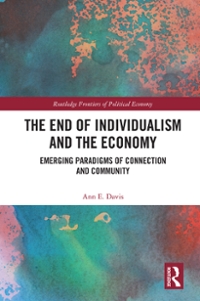Question
1.A recent critic bemoans what he calls the Socratic fallacy, namely, the doctrine that one cannot recognize instances to which some general term applies unless
1.A recent critic bemoans what he calls "the Socratic fallacy," namely, the doctrine that one cannot recognize instances to which some general term applies unless one knows, and can give, the definition of that term. What reasons might one give for supposing that this is a Socratic doctrine? Is it?
4. A recent critic bemoans what he calls "the Socratic fallacy," namely, the doctrine that one cannot recognize instances to which some general term applies unless one knows, and can give, the definition of that term. Is this is a Socratic doctrine? Is it a fallacy? Defend your answer.
5. What is Plato's doctrine of Recollection? How does he try (in the Meno) to establish the doctrine? How successful is he in establishing it? 6. What is "Meno's paradox" (Meno 80d-e)? Is it a genuine paradox? Expound and evaluate Socrates' response to it.
7. What is "Meno's paradox" (Meno 80d-e) supposed to prove? Does it succeed in proving its conclusion? Expound and evaluate Socrates' response to it.
8. What is "Meno's paradox" (Meno 80d-e)? Is it a genuine paradox (i.e., does it succeed in establishing an apparently untenable conclusion)? Expound and evaluate Socrates' response to it. 9. What is "Meno's paradox" (Meno 80d-e)? What conclusion does it purport to establish? Does it succeed? If not, why not? Expound and evaluate Socrates' response to it.
10. In the Phaedo (100ff), Plato treats the forms as "causes" i.e., things we appeal to in giving explanations of a certain sort. Aristotle, in the Physics (Bk.II, Ch.3) argues that there are four senses of "cause". In which of Aristotle's four senses are Plato's Forms "causes"? (Cf. Aristotle's claim, in the Metaphysics, Bk. I, Ch. 9, that in the Phaedo Forms are said to be causes of both being and becoming.) Why are the Forms, from Aristotle's point of view, defective as the sorts of "causes" he interprets them as being? 11. Plato offers the Theory of Forms as a solution to a number of different philosophical problems. What are those problems? How is the theory supposed to solve them? (E.g.,
Two transformers are to be operated in parallel such that they share load in proportion to their kVA ratings. The rating of the first transformer is 500 kVA and its pu leakage impedance is 0.05 pu. I f the rating of second transformer is 250 kVA, then its pu leakage impedance is?
Question 12:
A 220 V DC machine supplies 20 A at 200 V as a generator. The armature resistance is 0.2 ohm. If the machine is now operated as a motor at same terminal voltage and current but with the flux increased by 10%, then ratio of motor speed to generator speed is A 400 V, 50 Hz, three phase balanced source supplies power to a star connected load whose rating is 12 3k VA, 0.8 pf (lag). The rating (in kVAR) of the delta connected (capacitive) reactive power bank necessary to bring the pf to unity is?
Question 13:
A three-phase squirrel cage induction motor has a starting torque of 150% and a maximum torque of 300% with respect to rated torque at rated voltage and rated frequency. Neglect the stator resistance and rotational losses. The value of slip for maximum torque is?
Question 14:
A single - phase 50 - kVA, 250V/ 500 V two winding transformer has an efficiency of 95% at full load, unity power factor. If it is reconfigured as a 500 V/ 750 V auto-transformer, its efficiency at its new rated load at unity power factor will be A three-phase, three-stack, variable reluctance step motor has 20 poles on each rotor and stator stack. The step angle of this step motor is?
Question 15:
A 100 k VA. 415 V (line). star -connect ed synchronous machine generates rated open circuit voltage of 415 V at a field current of 15 A. The short circuit armature current at a field current of 10 A is equal to the rated armature current. The per unit saturated synchronous reactance is?r
Step by Step Solution
There are 3 Steps involved in it
Step: 1

Get Instant Access to Expert-Tailored Solutions
See step-by-step solutions with expert insights and AI powered tools for academic success
Step: 2

Step: 3

Ace Your Homework with AI
Get the answers you need in no time with our AI-driven, step-by-step assistance
Get Started


